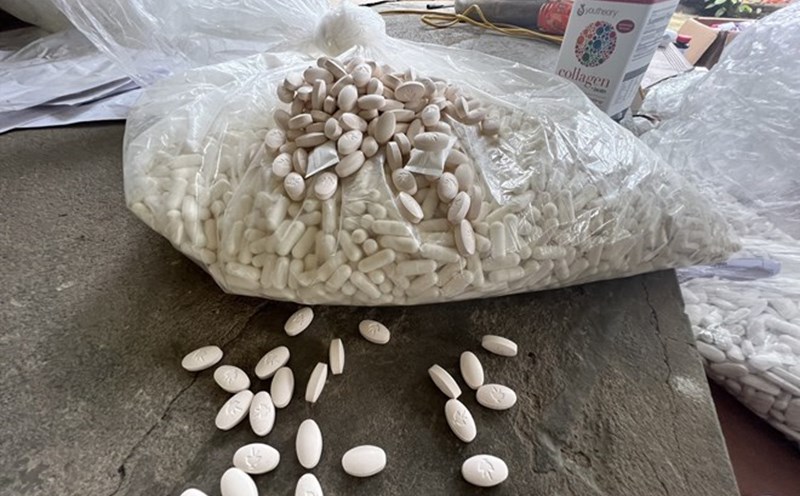Stone source from ICE COOL 88 seeped into a series of coffee shops
As reflected in the article "The King of Stele Manufacturing Technology in Hanoi", published on June 16 in Lao Dong Newspaper, the Stele Manufacturing Factory named ICE COOL 88 (located on Buoi Street, Ba Dinh District, Hanoi) is a source of stone for a series of famous restaurants, restaurants and cafes in Hanoi. However, behind the stone bags in the sea is a temporary production process with serious lack of hygiene and safety.
In practice, ICE COOL 88 workshop operated with a system of sketchy equipment, the production environment was not covered with hygienic covers. Notably, the staff directly exposed the stone did not use gloves or protective gear, while the amount of stone produced and distributed each day was up to thousands of bags.
During the information collection process, the group of reporters easily encountered "Su toc" vehicles or motorbikes with large boxes behind carrying rocks running down the streets of Hanoi, from early morning to late night. These stone bags are brought to many famous locations such as the laika coffee chain (Trich Sai, Giang Vo, Thanh Nien...) or Tra Mai Khoi shop (Dao Tan street), along with a series of beverage shops in Tran Huy Lieu, Ngoc Khanh areas... All use stone balls from the workshop of Mr. Luong Tran Ha, owner of ICE COOL 88.
According to the reporter's verification, at the above beverage points (especially the establishments of the coffee chain with the laika cafe brand at 151 Trich Sai, Tay Ho; C4 Giang Vo, Giang Vo collective housing area, Ba Dinh and Mai Khoi tea shop at 43 Dao Tan, Ba Dinh)... The brewing stalls all originated from ICE COOL 88.
This is something that many consumers cannot help but worry about, because although it is called "clean stone", if the production process does not ensure hygiene and quality standards, it still has many potential health risks.
Warning from experts
Speaking with Lao Dong, Associate Professor, Dr. Tran Hong Con - lecturer at the Faculty of Chemistry, University of Natural Sciences, Hanoi National University - affirmed that a water filtration system using RO (reverse condensation) technology that meets standards is capable of removing most impurities, including minerals, bacteria, parasites and toxic substances in water. The water after filming almost reaches the pure level.
However, the expert noted that this effect can only be achieved if the equipment is genuine, of good quality, and the film is filtered to ensure standards. RO filters floating on the market or using poor quality film (to reduce production costs, increase profits) will not achieve the desired efficiency.
In the context of many stone production facilities on the market, especially at unit markets such as Long Bien market (Hanoi), using water of unknown origin to make stone for food preservation, the risk of unsafe hygiene is very high.
According to Associate Professor, Dr. Tran Hong Con, this can only be accepted if the stone is not in direct contact with the food, for example, the stone is placed in a refrigerator with salt to cool the food that has been sealed in a nylon bag. However, if food comes into direct contact with this rock, it is "un acceptable in terms of food safety".
Associate Professor, Dr. Tran Hong Con further warned that if the water source is contaminated with heavy metals such as asen, manganese or iron, which are all substances that often exist in groundwater, the risk of affecting health is very high. Many people mistakenly believe that the water they see in is clean water, but in fact, harmful inorganic impurities can still exist. Only RO or modern nano filtering technology can completely eliminate these toxic metal ions.
Associate Professor, Dr. Tran Hong Con emphasized: If the water after the filter does not reach the purification level, it cannot be called RO filter water that meets standards. Stones used for drinking or preserving food must be produced from clean water. Although there is more salt to increase the cooling efficiency, this will not be pure water in nature, so that rock still has the potential to cause harm".










